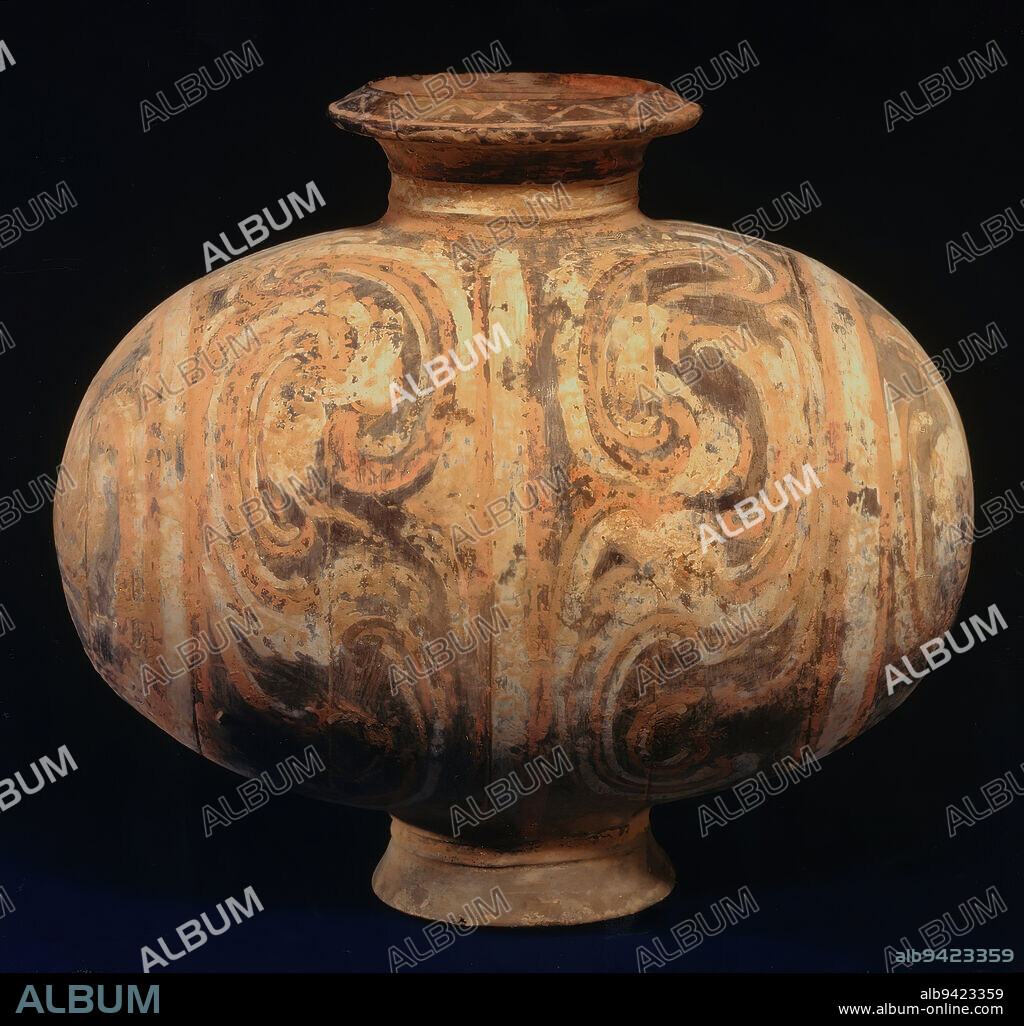alb9423359
Cocoon-shaped Jar, 3rd-early 2nd century BCE, 12 1/8 x 13 1/4 x 8 1/2in. (30.8 x 33.7 x 21.6cm), Earthenware with traces of pigment, China, 3rd-2nd century BCE, Silk production, from the rearing of silkworms to weaving silk cloth, was an important source of income to Chinese farming families. This type of jar with its elegant cocoon shape was extremely popular during the Chin (221-206 b.c.) and Western Han periods (206 b.c.-a.d. 25). Plain grey earthenware was often painted during Han. The colors used were red, brown, green, yellow, black, white, orange, and blue. Jars like this may have been used in the ritual practices of sericulture as the rearing of silkworms was fraught with superstitions during the Han period.

|
Añadir a otro lightbox |
|
Añadir a otro lightbox |



¿Ya tienes cuenta? Iniciar sesión
¿No tienes cuenta? Regístrate
Compra esta imagen.
Selecciona el uso:

Descripción:
Ver traducción automática
Cocoon-shaped Jar, 3rd-early 2nd century BCE, 12 1/8 x 13 1/4 x 8 1/2in. (30.8 x 33.7 x 21.6cm), Earthenware with traces of pigment, China, 3rd-2nd century BCE, Silk production, from the rearing of silkworms to weaving silk cloth, was an important source of income to Chinese farming families. This type of jar with its elegant cocoon shape was extremely popular during the Chin (221-206 b.c.) and Western Han periods (206 b.c.-a.d. 25). Plain grey earthenware was often painted during Han. The colors used were red, brown, green, yellow, black, white, orange, and blue. Jars like this may have been used in the ritual practices of sericulture as the rearing of silkworms was fraught with superstitions during the Han period.
Crédito:
Album / quintlox
Autorizaciones:
Modelo: No - Propiedad: No
¿Preguntas relacionadas con los derechos?
¿Preguntas relacionadas con los derechos?
Tamaño imagen:
2918 x 2774 px | 23.2 MB
Tamaño impresión:
24.7 x 23.5 cm | 9.7 x 9.2 in (300 dpi)
Palabras clave:
AMARILLO (COLOR) • AMARILLO • AZUL • BLANCO • CHINA • COLOR ROJO • COLORES • EN ROJO • ENCABRITADO • LOZA DE BARRO (CERÁMICA) • MARRON • NARANJA • NEGRO • PIGMENTO • PINTADA • PINTADO • ROJA • ROJO (COLOR) • ROJO • SUPERSTICIONES • TARRO • VERDE • WHITE
 Pinterest
Pinterest Twitter
Twitter Facebook
Facebook Copiar enlace
Copiar enlace Email
Email
